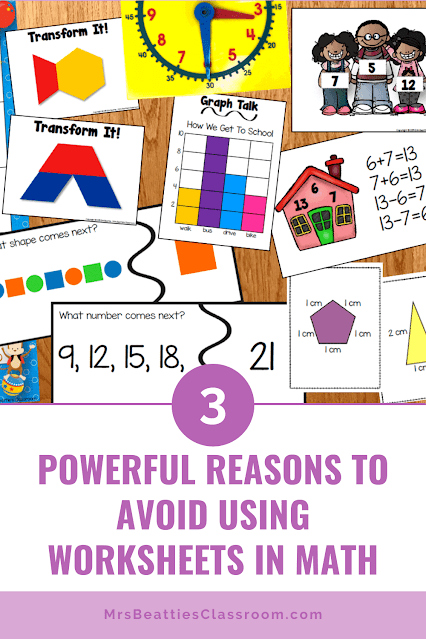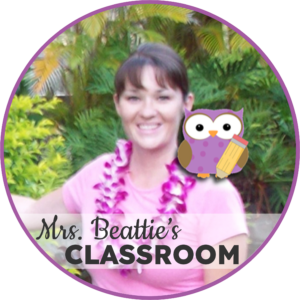There are a lot of math programs available out there to choose from. All have some great qualities, but you might be shortchanging yourself if you’re choosing something based solely on worksheets. Here are three powerful reasons to avoid using worksheets in math.
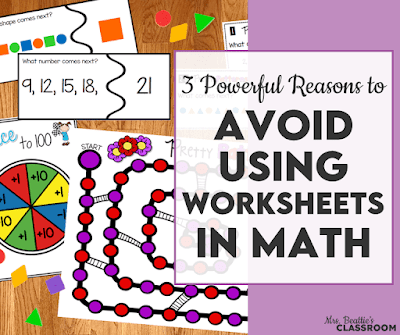
Before I continue, let me say that worksheets have a place. They can be a simple way of collecting data on what your students can or cannot do, and they are easy. Let’s face it: stopping at the photocopier is easy, right? So, why avoid worksheets?
Worksheets In Math Mean Constant Photocopying
If your math program is based mainly on worksheets, you will constantly prepare activities for your lessons. You’ll need to copy one or more pages for your students to work on daily. If you’re carefully differentiating to meet the needs of all your students (and you should be!), you may have three or more groups, all requiring different pages to work from.
This is a waste of your time and paper.
By choosing a math program based on hands-on centers, you spend a chunk of time preparing the centers once. If you take the time to do it smartly, you have them forever! Prep them once, and you’re done!
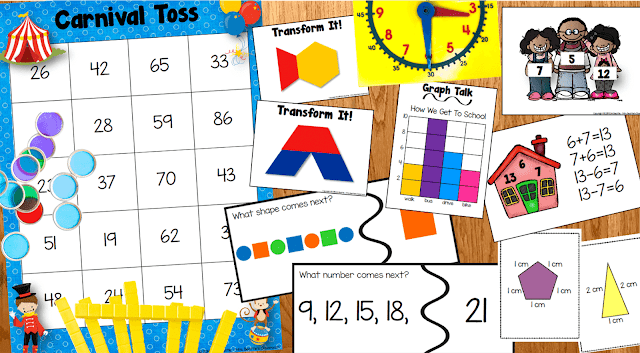
Limited Use
When you teach with worksheets, you use a page once, and then you’re done. But what if the students don’t master the skill or concept after one worksheet? Will you hunt down another activity for them to use until they get it?
Centers provide your students with the opportunity to engage with a topic repeatedly. They will progress and eventually master the goals of the program! With open tasks and games, your students are never actually finished with a task.
While worksheets are once and done, centers can be used:
- during regular math rotations
- as extension activities
- for remedial work
- as early finisher activities
- during indoor recesses
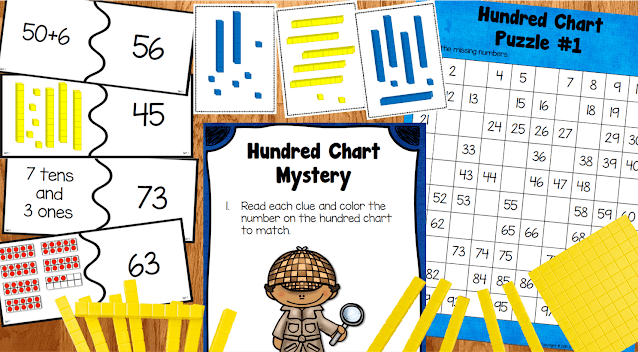
Student Engagement
When was the last time you saw your students get really excited about completing a worksheet? Okay, a paper activity may engage them from time to time, but is that engagement consistent?
What makes our students excited to learn and what they learn best from are varied hands-on activities where they can actively engage with the math content instead of passively answering questions.
Games, puzzles, cards, matching activities, and meaningful use of math manipulatives are what make students love math.
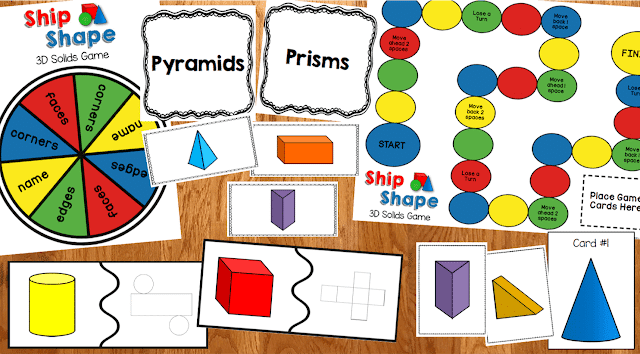
Hands-on centers appeal to different learning styles and make learning more accessible to your students, particularly those who struggle.
Worksheets are part of most math classrooms, but take the time to ask yourself if they should form the foundation of your program. Consider the alternatives. You can do better.
If you’d like to try some engaging hands-on centers for free, I have a Guided Math Quick-Start Guide available just for you here:
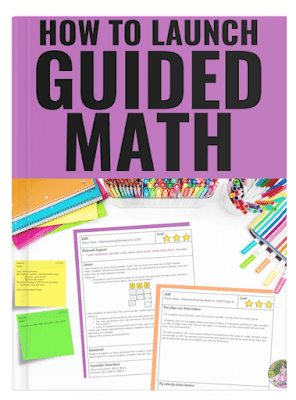
If you’re ready to get started with a quality Guided Math program based on hands-on experiences, these centers, available in English and French, are a perfect place to start!
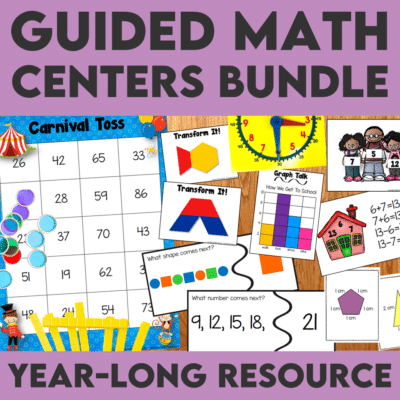
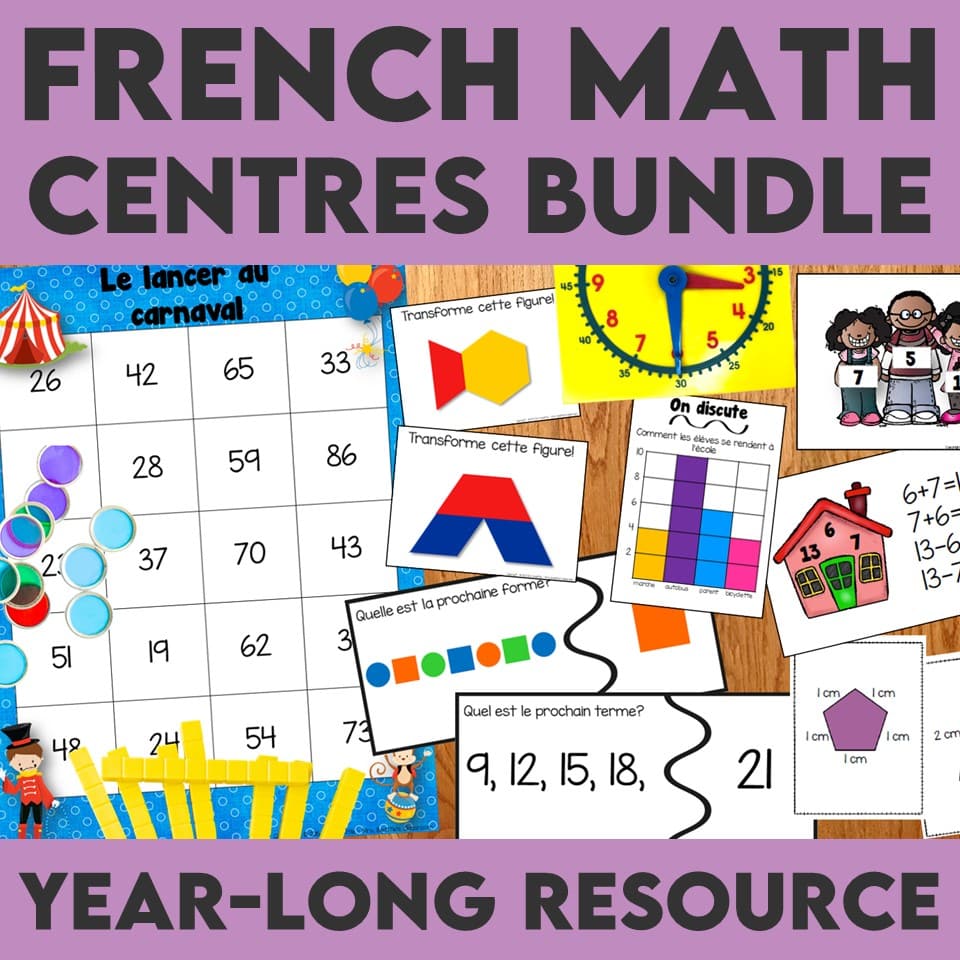
If you’re interested in learning more about a Guided Math program, you will want to check out this post next:
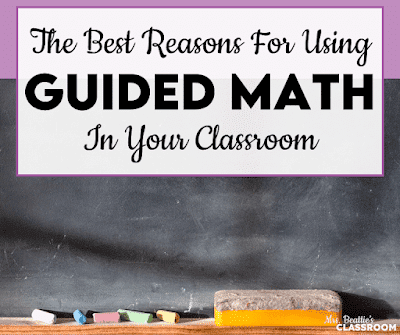
If you have enjoyed this post, please share it with friends and colleagues on Facebook or pin it on Pinterest:
